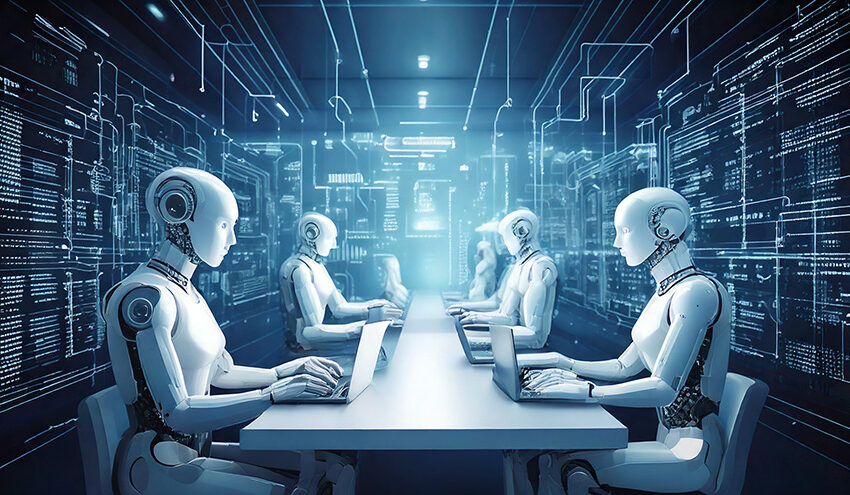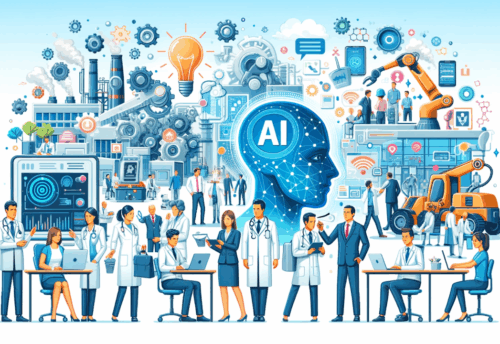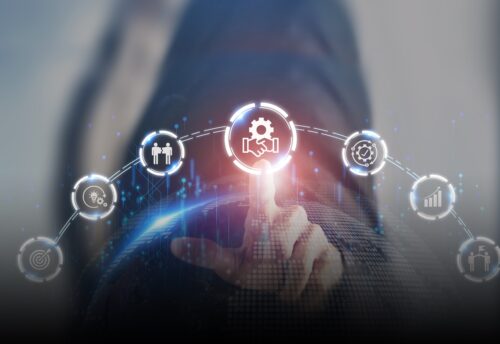
Agents In the AI-First Company

AI agents are an important component of the transformation to become an AI-first company. Corporations undertaking this transformation must understand where and how to incorporate agents and which agent types to utilize in the AI-centric processes they establish and the organizational structures they adopt. The article presents AI agent types, outlines how corporations should think about “agentification” as they transform to become AI-first, and explains how our firm’s AI methodology fits agents into AI-first business processes.
Introduction
The AI agent concept isn’t new. Research on AI agents began decades ago. As a young researcher at Digital Equipment Corporation’s R&D labs, I worked on intelligent agents and frameworks that enable different types of agents to collaborate during problem solving. The rise of generative AI gives us new ways to think about agents. Today, we use the term “agent” broadly to describe everything from simple chatbots to partly autonomous copilots. This lack of precision risks diluting what truly makes agents revolutionary in an AI-first company.
In a piece I wrote in August 2023, I provided my definition of an intelligent agent. Broadly, I explained that to be classified as an agent, a system must be able to receive input about a goal to be achieved, reason and develop a plan to address this goal using its understanding of the environment in which it operates and the knowledge it has access to, execute the plan, evaluate the results of its actions, and learn from the experience.
The Agency Spectrum
My definition outlines an ideal AI agent. Currently, few agents display this complete set of capabilities. However, even with fewer capabilities, agents remain a crucial part of the processes employed by AI-first enterprises. Moreover, they can also play vital roles in AI-enhanced processes utilized by other enterprises. Consequently, I view agency as a five-level spectrum.
- Level 1: Basic Automation. A deterministic system that uses a set of predefined rules and instructions to execute specific, repetitive tasks without any deviation or learning. These cannot reason or adapt to changes in their environment. Example: Robotic Process Automation (RPA) scripts.
- Level 2: Conversational or Generative Assistant. An assistant agent accepts input, generates contextually relevant output, and can adapt flow within a single session, but lacks persistent memory or autonomous learning. Examples: LLM-based chatbots and various copilot types, e.g., e-commerce agents, and OpenAI’s Operator.
- Level 3: Contextual Adaptive Agent. Adaptive agents maintain local memory during tasks, reason about changing context, plan, and update actions in real time. These agents adapt to changing conditions. However, they confine their learning to the task at hand. Examples: A Waymo autonomous vehicle and Amazon’s AI-based robotic fleet management.
- Level 4: Autonomous Learning Agent. This agent adapts its plan in real time, learns from each executed plan, and incorporates that experience into future actions. Learning is persistent and allows the agent to evolve its strategies over time without direct human intervention. Examples: DeepMind’s AlphaGo and its successors (AlphaZero, MuZero) demonstrate how agents can improve policies through self-play and reinforcement learning. However, such systems remain experimental, bound to constrained domains and training contexts.
- Level 5: Collaborative Multi-Agent System. The system comprises multiple Level 4 agents that operate in a shared environment to achieve common or competing goals. Such a system exhibits collective intelligence. Agents can dynamically form teams, negotiate with one another, and resolve conflicts to optimize for a shared objective. Examples: Research labs are developing drone swarms to autonomously coordinate their actions for tasks like search and rescue. This is at the frontier of AI research.
As we move from Level 1 to Level 5, human involvement transitions from full control to no control. Level 2 agents have a collaborative relationship with humans. Generative AI provides Level 2 AI agents with capabilities in natural language generation, knowledge synthesis, and certain types of reasoning. It expands their ability to communicate with humans and, potentially, with other agents. Level 3 agents utilize new post-training approaches and neurosymbolic computing extensively. With these agents, the human’s role is that of the governor and orchestrator. The human knows which agent to invoke for each task and in what sequence to invoke them. But once invoked, the Level 3 agent completes the entire task.
Deciding to Develop an Agent and Selecting Its Level
The AI-first company formulates corporate strategy, business processes, and organizational structures around AI. As it relates to AI agents, corporations must make three deliberate design choices during their AI-first transformation:
- Agentifying a task, or an entire process;
- Determining whether to develop the agent, or agents, or license third-party ones;
- Selecting the agent’s level.
The corporation must make these choices through an agentification strategy. Developing an agent without having an overall strategy often leads to failure.
An agent should encapsulate a task, or an entire process, when autonomous decision-making is possible, or when the task’s completion at least requires input from a dynamically changing environment coupled with human oversight. For example, consider the task “Monitor issued purchase orders and work logs to validate what payments are due,” which is part of the AI-first vendor payment process I introduced in a previous piece. Furthermore, assume that the process is used by a construction company to pay its vendors. This is a task that can be performed autonomously and, therefore, can be agentified using a Level 3 agent. In this case, the human operator acts as a governor and orchestrator of the agents that are part of the business process.
Next, suppose that the same process is used by a retailer. The decision on whether to pay the vendor and how much may also depend not only on the number of items delivered by the vendor but also on how many of these items were returned by the retailer’s customers. As the number of returns changes dynamically, an agent can be retrieving return data and a human interpreting whether the data warrants full, partial, or no payment to be issued to the vendor. This implies that the task can still be agentified by a Level 2 agent. In this case, the human operator acts as a collaborator of the agents that are part of the business process.
Creating an Agent Ecosystem
Agentification does not stop at the enterprise boundary. Once an AI-first corporation deploys robust agents in critical workflows, it will increasingly require its key vendors, partners, or customers to expose agents that comply with shared protocols. This implies defining:
- Minimum capabilities each external agent must have,
- Secure communication protocols for agent-to-agent negotiation,
- Governance procedures for onboarding, escalation, and exception handling.
This ecosystem approach ensures that agent-to-agent interactions across organizational boundaries remain secure, auditable, and aligned with the corporation’s governance framework.
Conclusion
Enterprises are actively experimenting with a variety of internally developed and third-party AI agents. Agents already deployed in production, from a Waymo vehicle to OpenAI’s Operator, show how far we have come, but also how far we still have to go. For the corporation, agentification is not a one-time decision; it is a maturity journey.
Using our methodology, we recommend that companies undertake the transition to become AI-first:
- Start with AI-first processes that embed the right level of reasoning and autonomy for their current environment.
- Design modular architectures that enable the right levels of orchestration and governance, allowing agents to evolve.
- Create clear pathways for processes to progress from static automation to adaptive, learning, collaborative systems.
By defining a clear transformation plan and timeline, AI-first companies lay the groundwork for the adaptive, learning agents that will power tomorrow’s distributed, intelligent enterprise, creating a competitive edge that is increasingly difficult to replicate.




Leave a Reply